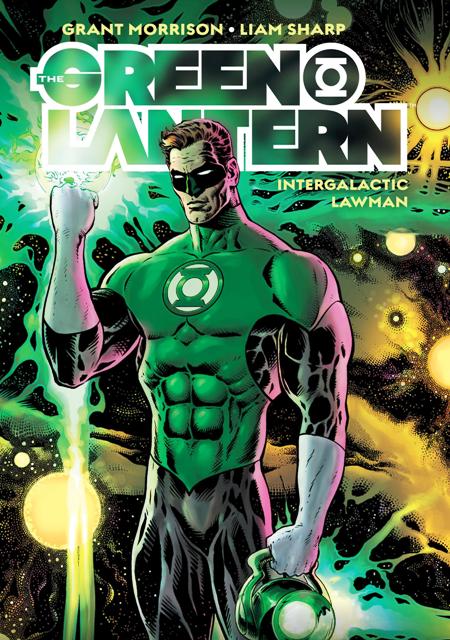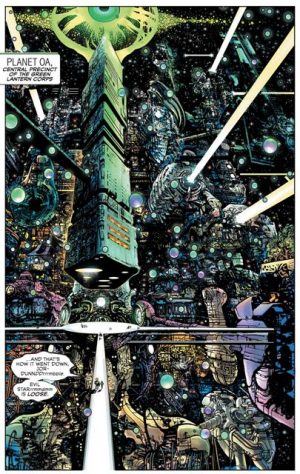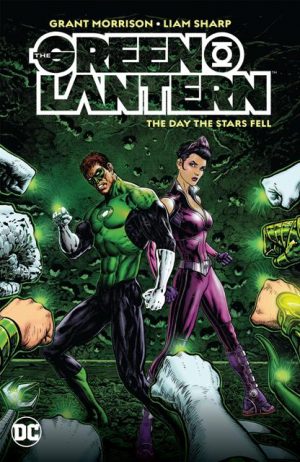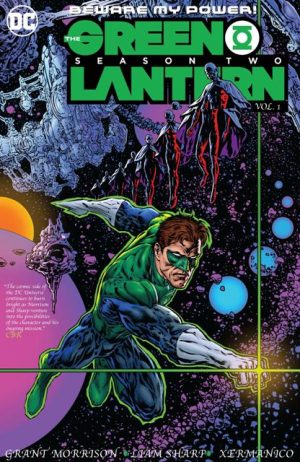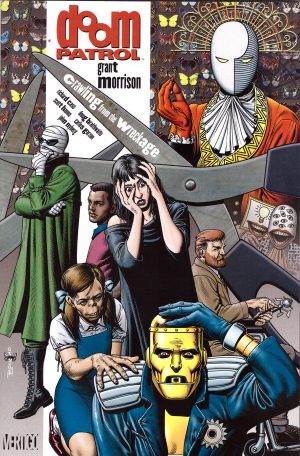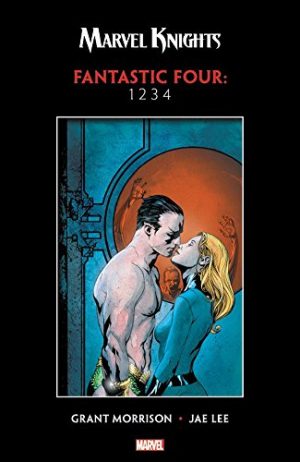Review by Jamie McNeil
In Justice League: Origin (DC’s ‘New 52’ reboot) the President of the USA comments on the team’s colourful costumes to which Green Lantern Hal Jordan takes umbrage. “I don’t wear a costume. This is my uniform.” While any iteration of Green Lantern has largely been treated as a costumed hero, Grant Morrison quickly establishes that Hal Jordan isn’t a superhero but a cop, an Intergalactic Lawman covering a beat that spans planets and dimensions. So yes, Hal doesn’t wear a costume he wears a uniform.
The story opens on veteran Green Lantern Maxim Toth and his team enforcing law and order on another planet. Hal Jordan is on Earth floating from job to job after being grounded by the Guardians of Oa pending repairs to his power battery. When a vessel carrying prisoners from Toth’s last bust crash lands on Earth, Hal is flung back into work. These fugitives are only one thread to a complex plot and a dangerous menace that poses a threat to Earth and host of other planets.
Intergalactic Lawman is more police procedural than space opera or superhero romp. As far as plot progression goes, it is immediately more interesting. Morrison crams in concepts alongside Easter egg references to Jordan’s origins and retaining that classic Morrison mystical quality. While the story isn’t smooth reading, plot pieces and transitions bewildering with the dialogue clunky, it’s these ideas alongside solid character development that makes it worth reading.
To reiterate, Hal Jordan is a cop. On Earth he may be viewed as a meddlesome superhero who nearly destroyed it (especially by Batman), but in space his authority as an officer of the law is recognised, respected and feared. Yet he isn’t unscathed by the atrocities he’s witnessed across galaxies, jaded by how they can simply be overlooked or even permitted if it suits an agenda or philosophy. That notion gives Hal a relatable realism with a dash of hard-boiled homicide detective. What he experiences on the job in outer space is what affects his relationships and life on Earth.
As good as they are none of these concepts would work if not for Liam Sharp’s artwork, phenomenal from the start and packed with detail reminiscent of a Luc Besson epic. A multitude of various alienoids and futuristic objects fill the space from the back right to the front of panels. The action scenes are clunky, but the sumptuous illustration more than makes up for it. Oa is all sky-scrapers and flourishes of colour, a bustling hub of activity that stands out because not many artists have attempted to depict Oa in this way (sample art). The Green Lantern is Morrison’s ode to 1960s comics and Sharp adds a loving retro feel to wonderful fresh new worlds with Kirby-esque grandeur. His art makes you feel like you are reading the first Green Lantern stories. You could and should spend ages poring over it.
Intergalactic Lawman isn’t Morrison at his best, but conceptually and artistically it is a gold mine. Other writers have always portrayed Jordan as heroic, even when controlled by Parrallax, but this isn’t a heroic Jordan. He’s more a space version of fictional detective Harry Bosch, caring less about the greater good or honour or the prestige of being the greatest Lantern. He does it because it is his job, plain and simple, and evil people who commit evil acts should be brought to justice.
The Green Lantern continues with The Day the Stars Fell.
